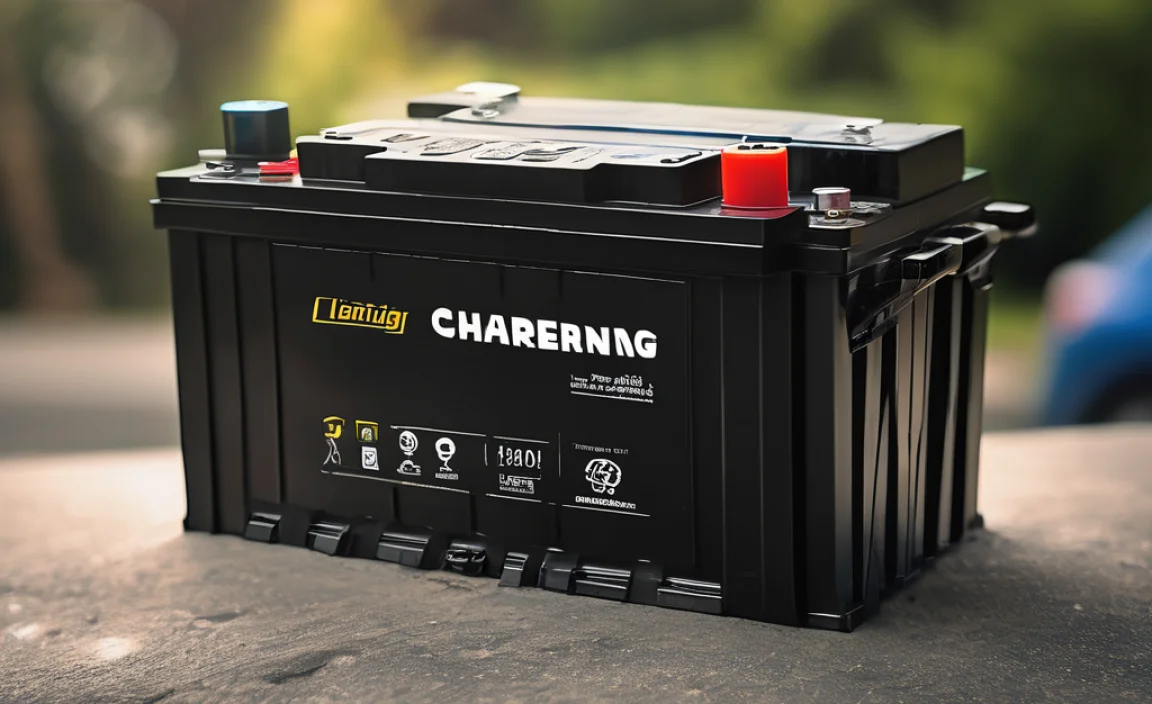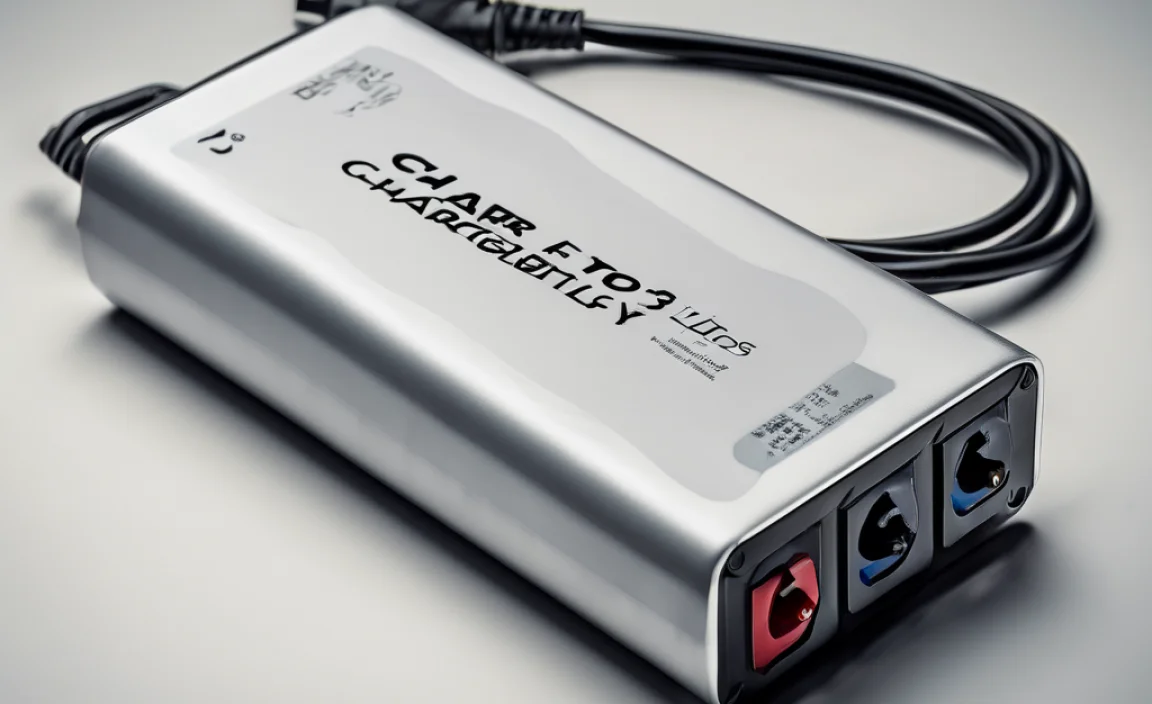Quick Summary: Getting power for your Raspberry Pi is easy with the right solutions! Explore options like official power supplies, USB-C adapters, and portable power banks. Choosing the best battery for RPi ensures stable performance for your projects. Learn about types, what to look for, and how to avoid common power problems to keep your Pi running smoothly.
Keeping your Raspberry Pi powered up is super important for all sorts of cool projects, from simple robots to home media centers. Sometimes, the basic power adapter that comes with it just isn’t enough, or you need a way to power it when you’re on the go. Don’t worry, power issues are common, and we’ve got simple ways to fix them!
This guide will walk you through the best “battery for RPi” power solutions. We’ll look at different types of power sources, what makes them work well, and how to pick the right one for your needs. You’ll learn how to ensure your Pi gets the steady power it needs to perform at its best. Let’s get your Pi powered up and ready for action!
Understanding Raspberry Pi Power Needs
Your Raspberry Pi is like a tiny, powerful computer, and like any computer, it needs a consistent flow of electricity to work. The amount of power it needs can change depending on what you’re doing with it. When it’s just booting up or running simple tasks, it needs less power. But if you’re running more demanding applications, using external devices like cameras or speakers, or connecting lots of USB gadgets, it needs significantly more power.
The most common issue power-related issues, often called “under-voltage,” happen when the Pi doesn’t get enough stable power. This can cause it to slow down, freeze, or even crash. You might see a lightning bolt icon appear on your screen, which is a warning sign that your Pi is not getting enough stable power. This is why choosing the right power supply for your Raspberry Pi is so crucial.
What Makes a Good Power Supply for Your Pi?
Not all power supplies are created equal, especially when it comes to sensitive electronics like the Raspberry Pi. Here’s what you should look for:
- Voltage: Raspberry Pi boards typically run on 5V (5 volts). It’s essential that your power supply provides this exact voltage. Too low, and your Pi won’t boot up or will be unstable. Too high, and you risk damaging the board.
- Amperage (Current): This is about how much power the supply can deliver. Your Raspberry Pi needs a certain amount of current to operate, and this increases with connected peripherals. Most modern Pi models, especially the Raspberry Pi 4 and 5, benefit from power supplies providing at least 3A (3 amps). Older models might get by with 2.5A, but 3A is a safe bet for most applications and provides headroom for accessories.
- Stability: A stable power supply delivers a consistent voltage and current without major fluctuations. Cheap, low-quality power adapters can have noisy power, which can interfere with your Pi’s performance and even corrupt data.
- Connector Type: Newer Raspberry Pi models (from Pi 4 onwards) use a USB-C connector for power. Older models used micro-USB. Make sure your power supply has the correct plug for your specific Pi model.
Official Power Supplies: The Safest Bet
The Raspberry Pi Foundation designs official power supplies specifically to meet the power requirements of their boards. These are often the easiest and safest choice for beginners.
Why go official?
- Designed for Raspberry Pi: They are engineered to provide the correct voltage and amperage for optimal performance and stability.
- Quality and Safety Certified: Official supplies undergo rigorous testing and meet safety standards, reducing the risk of damage to your Pi or electrical hazards.
- Reliability: Because they are designed by the creators of the Raspberry Pi, you’re less likely to encounter compatibility issues.
The official Raspberry Pi USB-C Power Supply typically offers 5.1V and 3A, which is perfect for Raspberry Pi 4 models and generally suitable for Raspberry Pi 5. For older models like the Raspberry Pi 3B+, you might find official micro-USB power supplies that offer 5.1V and 2.5A.
You can usually find these on the official Raspberry Pi website or from authorized distributors.
Alternative Power Sources: Adapters and Power Banks
While official power supplies are great, they’re not always the most portable or convenient. Sometimes you need a different solution. This is where USB-C adapters, smartphone chargers, and power banks come into play.
USB-C Adapters and Smartphone Chargers
Many modern smartphone chargers use a USB-C connector and can provide the necessary 5V. However, not all of them can deliver enough amperage. For a Raspberry Pi 4 or Pi 5, you generally need a charger that can output at least 3A.
What to look for:
- Check the Label: Look at the charger’s output specification. It should clearly state the voltage (5V) and amperage (e.g., “5V/3A”, “5V/3.1A”).
- Avoid “Fast Chargers” with too many profiles: Some “fast” chargers can dynamically change their voltage (e.g., 9V, 12V) or amperage. While some are designed to fall back to a standard 5V/3A mode, it’s safer to use chargers that are explicitly rated for 5V/3A.
- Quality Matters: Just like with dedicated Pi power supplies, the quality of the USB-C adapter significantly impacts stability. A reputable brand is generally a better choice.
Important Note: While many USB-C phone chargers might work, they are not specifically tested or certified for Raspberry Pi. There’s a small risk of incompatibility or instability compared to an official power supply. Always monitor your Pi for under-voltage warnings if you use a non-official charger.
According to the Raspberry Pi Foundation, it is possible to power a Raspberry Pi 4 with a good quality USB-C power adapter that provides at least 3A at 5V. You can find more technical details about power requirements on their official documentation pages.
Power Banks: Portable Pi Power
Power banks are fantastic for making your Raspberry Pi project portable. You can take your Pi out of the house, into a workshop, or even use it in a car without needing a wall outlet.
Key Features for Pi Power Banks:
- Sufficient Amperage: This is critical. Your power bank must be able to output at least 3A at 5V through its USB port. Many power banks are optimized for charging phones, which often need less continuous current.
- USB-C PD (Power Delivery): For newer Pi models, look for power banks that support USB-C Power Delivery (PD). This standard allows for higher power transfer and often provides a stable 5V mode capable of delivering 3A or more.
- Capacity (mAh): This determines how long your power bank can run your Pi. A higher milliamp-hour (mAh) rating means longer runtime. For example, a 10,000mAh power bank will last much longer than a 5,000mAh one.
- Simultaneous Charging and Discharging: Some power banks can charge themselves while also powering your Pi. This is often called “pass-through charging,” which is useful for long-term installations or if you have a portable solar panel setup.
Table: Power Bank Capacity vs. Estimated Runtime (Raspberry Pi 4)
| Power Bank Capacity (mAh) | Estimated Runtime (Hours) | Notes |
|---|---|---|
| 5,000 | 1.5 – 2.5 | Good for short sessions. Requires 3A+ output. |
| 10,000 | 3 – 5 | Popular balance of size and runtime. Ensure 3A+ output. |
| 20,000 | 6 – 10 | For extended use. May be bulkier and heavier. Ensure 3A+ output. |
Runtime estimates are approximate and depend on Pi model, workload, and power bank efficiency.
When choosing a power bank, always check its specifications carefully, especially the output current for its USB ports. A 20,000mAh power bank from a reputable brand that clearly states a 5V/3A output is a strong contender for powering your Raspberry Pi on the go.
What About Car Batteries? (For Mobile Projects)
While not a direct “battery for RPi” in the sense of a portable pack, a car battery can power your Raspberry Pi if you’re building a project that needs to run in a vehicle. This usually involves converting the car’s 12V system down to the 5V the Pi needs.
Safety First! Working with car electrical systems requires caution. Always disconnect the battery before making connections and be aware of short circuits.
You’ll typically need:
- A 12V to 5V DC-DC Converter: These are small electronic modules that efficiently step down the car’s voltage to the stable 5V your Raspberry Pi requires. Look for converters specifically designed for automotive use that can output at least 3A.
- Appropriate Connectors: You’ll need to connect the converter to your car’s power source (e.g., cigarette lighter adapter, or directly to the battery terminals with a fused connection) and then connect the converter’s 5V output to your Raspberry Pi’s power input (USB-C or micro-USB, depending on your Pi model).
- Fuses: Always install an inline fuse between the car’s power source and the DC-DC converter to protect against overcurrent and short circuits. A 5A fuse is often a good starting point.
These converters are readily available from electronics suppliers and online retailers. They are a robust solution for powering a Raspberry Pi that needs to run inside a car or other 12V system.
Comparing Power Solutions
Let’s quickly compare the main “battery for RPi” options to help you decide:
Table: Raspberry Pi Power Solution Comparison
| Solution | Pros | Cons | Best For |
|---|---|---|---|
| Official Power Supply | Guaranteed compatibility, reliable, safe, easy to use. | Requires wall outlet, less portable. | Desktop use, beginners, critical projects. |
| Quality USB-C Charger (5V/3A+) | Accessible, can be used for multiple devices, potentially portable. | Varying quality, risk of under-voltage if not spec’d correctly. | Occasional portable use, projects with existing USB chargers. |
| Power Bank (5V/3A+ output, PD capable) | Highly portable, no wall outlet needed, great for projects on the go. | Limited runtime, needs recharging, requires careful spec checking. | Mobile projects, field work, remote installations. |
| 12V to 5V DC-DC Converter (in vehicle) | Stable power from car battery, suitable for mobile vehicle projects. | Requires installation, needs knowledge of car electrics, not portable outside vehicle. | In-car computer systems, data loggers, mobile sensor setups. |
Troubleshooting Common Power Issues
Even with the best power supply, you might run into hiccups. Here are some common problems and how to solve them:
1. The “Lightning Bolt” Icon:
- What it means: This icon (a small lightning bolt in the top right corner of the screen) is the Raspberry Pi’s way of telling you it’s receiving insufficient power, also known as under-voltage.
- How to fix:
- Ensure you’re using a power supply with sufficient amperage (at least 3A for Pi 4/5, 2.5A for Pi 3).
- Check your USB cable. A thin or damaged USB cable can restrict power flow. Use a good quality, shorter cable if possible.
- Disconnect any unnecessary USB peripherals that draw a lot of power.
- Try a different, known-good power supply or adapter.
2. Pi Won’t Boot Up:
- What it means: No power is reaching the Pi, or the power is too unstable to even start the boot process.
- How to fix:
- Double-check that your power supply is plugged in and switched on.
- Verify the voltage and amperage of your power supply. It must be 5V, and the amperage needs to be sufficient.
- Ensure the USB cable is securely plugged into both the adapter and the Pi.
- Try a different power supply and cable.
- Make sure you’re using the correct power port for your Pi model (USB-C for Pi 4/5, micro-USB for older models).
3. Unexpected Shutdowns or Freezing:
- What it means: The Pi is getting enough power to start, but it’s not consistently stable, leading to crashes when the system demands more power.
- How to fix:
- This is another classic sign of under-voltage. Follow the same steps as for the “Lightning Bolt” icon.
- Overheating can also cause freezes. Ensure your Pi has adequate ventilation, especially if it’s in a case or running demanding tasks. Resources like Raspberry Pi’s official accessories page recommend cooling solutions.
4. Power Bank Stops Working After a While:
- What it means: The power bank might have an auto-shutoff feature that detects low current draw from the Pi when it’s idle, or it might not be capable of the sustained 3A output required.
- How to fix:
- Ensure the power bank explicitly states it can provide 5V/3A continuously.
- Some power banks have a “low power” or “trickle charge” mode button that you can press to keep it active for devices with low or intermittent current draw. Try pressing this button if available.
- Check if the power bank supports USB-C PD and ensure it’s set to 5V output.
Choosing the Right Battery for RPi: A Quick Checklist
Before you buy, run through this checklist:
- Identify Your Raspberry Pi Model: This determines the required connector (USB-C or micro-USB) and the general power needs (higher for Pi 4/5).
- Determine Your Use Case: Will it be in a fixed location (wall adapter)? On the go (power bank)? In a vehicle (DC-DC converter)?
- Check Amperage: Aim for a minimum of 3A (3000mA) for Raspberry Pi 4 and 5. Older models might operate with 2.5A, but 3A provides more stability.
- Verify Voltage: It must* be 5V.
- Prioritize Quality: Stick to reputable brands for power supplies, adapters, and power banks. Cheap, uncertified options can cause more problems than they solve.
- Read Reviews: See what other users say about powering their Raspberry Pi with the specific product you’re considering.
FAQ: Your Top Questions Answered
Q1: Can I use my phone charger to power my Raspberry Pi?
A: You might be able to if your phone charger is a USB-C type and clearly states it can provide 5V at least 3A (for Pi 4/5) or 2.5A (for older models). It’s crucial to check the specifications on the charger. However, official Raspberry Pi power supplies or dedicated high-quality adapters are always recommended for maximum stability and reliability.



